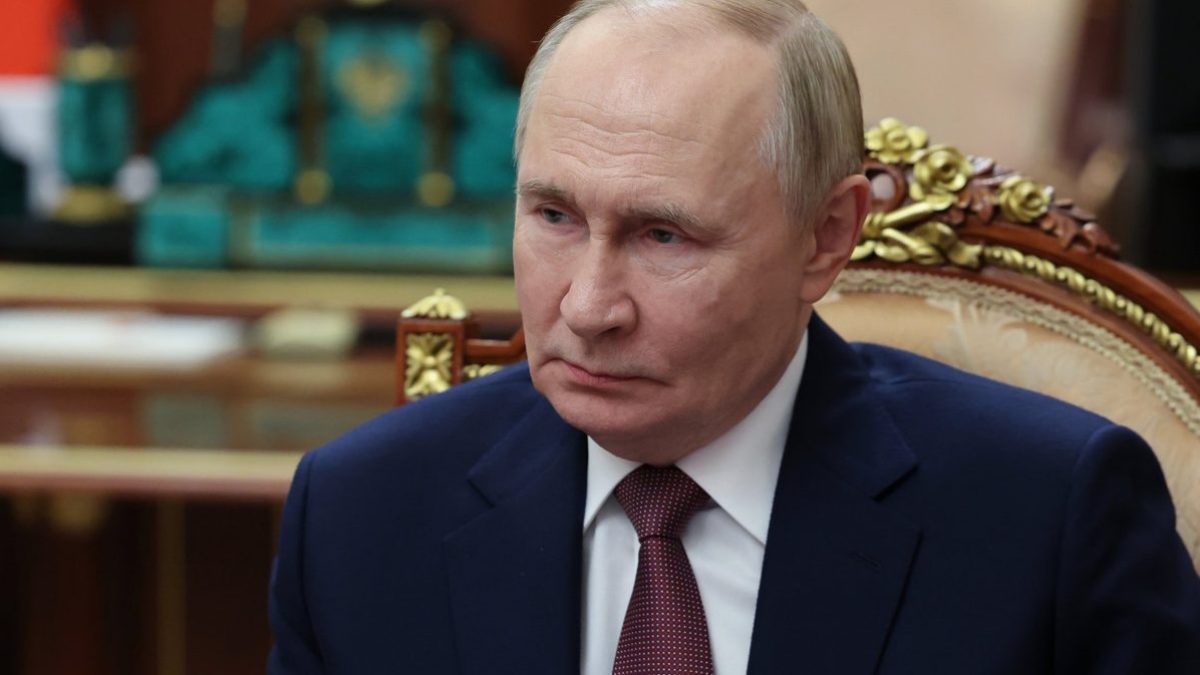The Ukraine war is expected to continue for at least 18 more months and expand across the continent
The great Putin-Trump mid-August circus in Anchorage, Alaska, is not to have a reprise in Budapest next week, after all. The plan has fallen apart even before the festivities began – and it has fallen apart for the same reason that the Alaska summit turned out to be a dud for Donald Trump.
Russia is not giving up on its maximalist demands for a peace deal on Ukraine – surrender by Ukraine, demilitarisation – plus “de-Nazification”, whatever that means, and a pro-Russian puppet running Kyiv. After “a very positive” two-hour phone call with Putin last week, Trump set Marco Rubio, Secretary of State, to arrange with his opposite number Sergei Lavrov the meet in Budapest on 28 October.
Trump and Rubio proposed a ceasefire on the present battlelines in Ukraine, with some swap of territory, and this could lead into long-term peace talks. Lavrov said there could be no ceasefire before a full peace agreement – and this must address the “root causes” of the conflict – meaning Ukraine must surrender and give up the dream of joining Europe through EU and Nato membership.
New FeatureIn ShortQuick Stories. Same trusted journalism.
The war in Ukraine goes on. It will now expand to a wider hybrid conflict across Europe, with probes by drones and fighter aircraft across Nato allies’ air space, a continuous cyber onslaught – the more deniable, the better – probing and disrupting vital communication and energy infrastructure.
The battle for Ukraine and the hybrid campaign of disruption across Europe are two aspects of Russian strategy, writes Michael Kimmage of the Kennan Institute in America. “Russia’s airspace violations show that Moscow makes no sharp distinction between Europe and Ukraine.”
The veteran Ukrainian diplomat Yurii Ladnyi said: “Russia is embarking on a hybrid campaign of global proportions – a hybrid World War III, you might say.”
Vladimir Putin got what he wanted from the phone call with Trump last week, as he got what he wanted from the truncated summit in Alaska. Putin persuaded him to abandon any thought of supplying Kyiv with medium range Tomahawk missiles – which was Zelensky’s main request when he visited the White House last Saturday.
In Alaska, Putin achieved world recognition. He was out of isolation, but didn’t get sanctions lifted – though there have been no new ones from the US since.
It’s a crude stalemate on the battlefront at present. Pokrovsk, as of the time of writing, is not in Russian hands – though this has been claimed for nearly 18 months now. Ukrainian cities, homes and energy facilities are being blasted almost nightly – and more air defence missiles and artillery are urgently needed.
Weather has played a tricky role, and at times been decisive. Armoured vehicles cannot cope with heavy mud churned up by autumn rains. The rains have also brought heavy cloud, hampering use of tactical drones for both sides. Both the Russian and Ukrainian forces are bleeding heavily – with Russia as times losing 1,000 soldiers a day. The total of killed, injured and missing for Russia since February 2022 now appears to be in excess of 1,100,000.
Ukraine is finding it hard to raise recruits, provide adequate reserves, and allow battle-weary troops time for recuperation. The Ukraine front line is reported to be “porous” in places. Ukraine, however, is winning a physical and psychological advantage by its continuous strikes against Russian energy and water supplies.
Putin feared America sending Tomahawks because of their range, accuracy and payload – this could cripple the main gas and oil supply system 1,500 miles into Russia. Long-range drones and missiles are reported to have hit nearly 40 per cent of refining capacity – for domestic gasolene and some diesel supplies, though the military is believed to have large reserve facilities.
Petrol rationing is widespread. Exports of oil and gas have been cut to thirsty markets like Pakistan. Deep winter threatens oil freezing and then bursting pipelines, since it cannot be kept moving because pumps have been blown up.
Tomahawks, almost a figment of propaganda imagination, may not be decisive. Ukraine is building its missile industry, among them the long-range Flamingo ground attack missile. Denmark, the Netherlands, and Germany are developing drones for Ukraine and themselves. Ukraine is becoming the world’s “drone Silicon Valley”, Bloomberg analysts say.
The UK is coproducing drones through its Octopus programme. “Putin ranks Britain as his number one enemy,” Defence Secretary John Healey declared this week, with surprising hyperbole. Some in the Cabinet Office wouldn’t agree and believe the Russian threat and the importance of Ukraine are overblown – according to well-established sources.
A panel of Ukrainian experts meeting at Kings College London this week warned about what they see as a common misconception about Ukraine and Russia in the UK.
Led by Iuliia Osmolovska of the Globsec foundation, they said their research shows most Ukrainian experts believe the war will continue for at least another 18 months.
“But you have to understand that Russia sees this as being about Russia, and not just pieces of territory,” explained Ambassador Yurii Ladnyi, who has served several Ukraine presidents. “It is about the idea of Russia, and that it should be central and dominant in Europe.”
This is why analysts like Kimmage see Ukraine as part of Putin’s “forever war”. Trump thought he could talk to Putin about money and real estate, and repeat his Gaza story on his path to the Nobel Peace Prize.
For Putin, it’s about Russia itself, and his personal destiny.
“You also have to realise in negotiating with Russia,” said Dr Domitilla Sagramoso, who leads on Ukraine and Russia in King’s War Studies department, “For Russia, what is ours is ours – and what is yours is always negotiable.”
